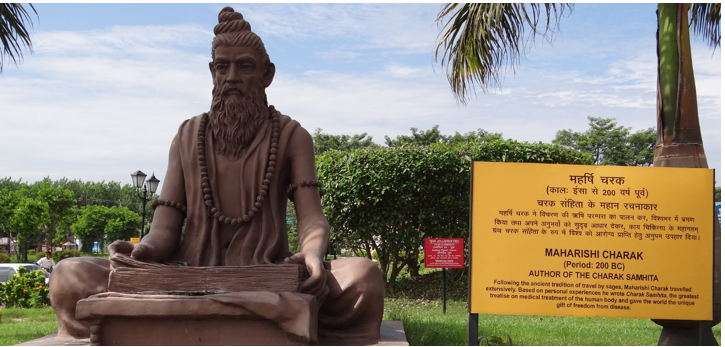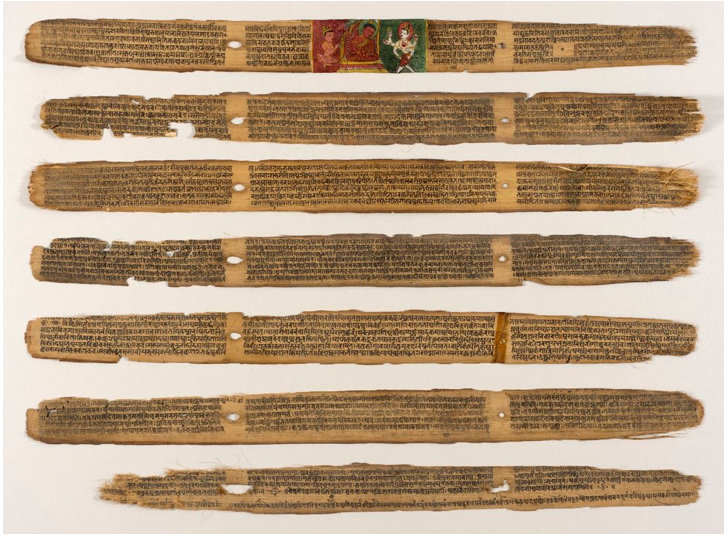

Context
The National Medical Commission (NMC), the regulator for medical education and practices that replaced the Medical Council of India in 2020, has suggested to medical colleges that the traditional Hippocratic Oath should be replaced by a “Charak Shapath”.
This attempt has been appreciated as it would introduce Indian element in education, as well as, criticized as an attempt to “saffronise medical education”.
What is Hippocrates and Hippocratic Oath?
Meaning
- Simply put, the Hippocratic Oath is a charter of ethical principles that physicians over the ages have sworn to uphold in the practice of their profession.
- The earliest available fragments of what is understood to be the original oath date back to the late 3rd century AD, and a millennium-old version is now in the library of the Holy See.
Historical Background
- The Hippocratic Oath is attributed to Hippocrates of the island of Kos, a Greek physician of the classical period (4th-5th centuries BC, until the death of Alexander the Great in 323 BC), broadly corresponding to the period from the death of the Buddha (486 BC) to the rise of the Mauryas (321 BC) in India.
- Among the great contemporaries of Hippocrates were the Athenian philosopher Plato and his teacher Socrates, and Plato’s student and Alexander’s tutor, the polymath
- The Corpus Hippocraticum is a collection of 70 books on medicine, however, most scholars agree that the Hippocratic Oath was probably not the work of the individual identified as the historical Hippocrates, the “father of modern medicine”.
- The oath seems rather to be “more Pythagorean (who lived a century or more before Hippocrates) in its moral and ethical flavour… (and it) might have been enriched by other authors in antiquity”.
What is Charaka and Charak Samhita?
- The new oath of choice is in honour of Maharshi Charaka, considered one of the principal contributors to the ancient science of Ayurveda and the author of the medical treatise, 'Charaka Samhita'.
- The Charak Samhita is a medical pharmacopoeia and collection of commentaries and discussions on medical practices that is dated to the 1st-2nd centuries AD.
- Along with the compendium of Susruta (c. 4th century AD), which is about surgery, the Charak Samhita is considered the foundational text of ancient Indian medicine, which was an evolved system of understanding and treating disease that resembled that of Hippocrates and Galen (2nd century AD), and was in some ways ahead of the Greeks.
- The ancient Indian interest in physiology is understood to have drawn from yoga and mysticism, and to have been enriched by the growth and spread of Buddhism to new lands, the arrival of the first Christian missionaries, and the contact with Hellenic practitioners of medicine.
- In theory and praxis, ayurvedic medicine today remains broadly unchanged from these ancient Indian principles.
|
Ancient Indian medicine
|
The medical ethics of Charaka
- The physician was an important and respected member of ancient Indian society, and medical practice followed rules of professional conduct and ethical principles.
- Charaka instructs a physician to preach to his pupils at a ceremony at the end of their apprenticeship.
“…You must strive with all your soul for the health of the sick. You must not betray your patients, even at the cost of your own life… You must not get drunk, or commit evil, or have evil companions… You must be pleasant of speech…and thoughtful, always striving to improve your knowledge.
“When you go to the home of a patient you should direct your words, mind, intellect, and senses nowhere but to your patient and his treatment… Nothing that happens in the house of the sick man must be told outside, nor must the patient’s condition be told to anyone who might do harm by that knowledge to the patient or to another.”
- This ethical code is universal, and remains just as relevant and applicable today.
|
Case Study
|
What is the need of medical ethics?
- The modern code of medical ethics aims to prevent healthcare workers and researchers from exploiting patients and protecting their human rights in the context of care-giving.
Is there any universally accepted version of oath?
There is no universally accepted version of the physician’s oath.
- Many medical schools around the world hold a ceremony in which graduating doctors swear to a broad charter of ethics that are sometimes customised by individual institutions.
- A version of the ‘physician’s code of ethics’ is commonly displayed in hospitals or clinics in most places, including India.
AMA’s Code of Medical Ethics
- The American Medical Association (AMA) describes its Code of Medical Ethics as a living document that has evolved as medicine and society have changed.
- The AMA’s Code was adopted in 1847, and underwent updates in 1903, 1949, 1957, and 2008.
WMA’s Code of Medical Ethics
- The World Medical Association (WMA) adopted an international code of medical ethics in 1949, which was amended in 1968, 1983, and 2006.
- In May last year, the WMA published a proposed modernised version of the international code, “outlining physicians’ duties towards their patients, other physicians, health professionals and society as a whole”, according to the WMA website.
- According to the WMA, some of the duties of physicians in general are to:
- always exercise his/her independent professional judgment and maintain the highest standards of professional conduct
- respect a competent patient’s right to accept or refuse treatment
- not allow his/her judgment to be influenced by personal profit or unfair discrimination;
- be dedicated to providing competent medical service in full professional and moral independence, with compassion and respect for human dignity
- deal honestly with patients and colleagues, and report to the appropriate authorities those physicians who practice unethically or incompetently or who engage in fraud or deception
- certify only that which he/she has personally verified
- respect the local and national codes of ethics
Hippocratic Oath vs. Charak Samhita OR Hippocratic Oath + Charak Samhita
In Favour
- It really does not matter what the words are during the oath-taking ceremony, as long as one’s heart is at the right place. The essence matters, not the content really.
- It is also a good idea to have vernacular versions of the oath so that people can speak in the language they are most comfortable in.
- There is no harm in introducing charak oath as the essence will be the same to motivate budding doctors to practice medicine ethically. As long as they do not do away with the oath it is fine.
Against
- Charaka Shapath might not be suitable for modern medicine practitioners. A person who is not believing in God would face the issue to take ‘Charak Shapath’.
- Questions arise on what is written in Charak Shapath or if the essence of the oath is the same.
- The Hippocratic Oath is an international convention that is not driven by religion, caste, creed, gender or regional parameters. It's globally accepted as an ethical premise for the medical community.
Way forward
Though it is important to implement the Indian elements into the education system,but not at the expense of universal values and standards. Instead of replacing the Hippocratic Oath, Charak Shapath could supplement the oath taken by doctors around the world.




